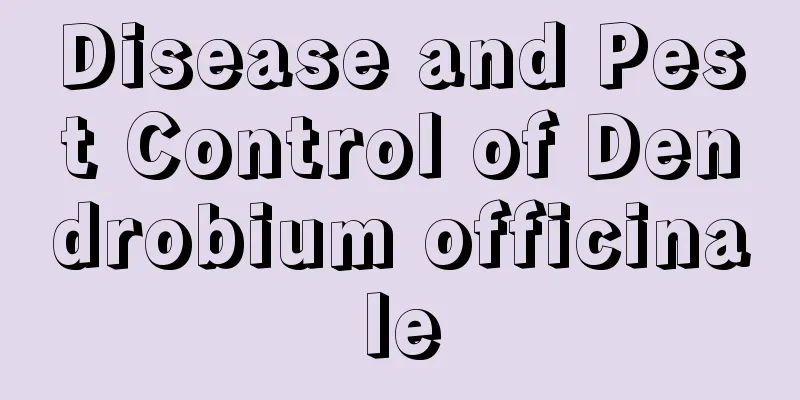Disease and Pest Control of Dendrobium officinale

1. SnailThis kind of insect mainly hides secretly on the back of the leaves, and basically damages the petals by eating the leaves or biting the stems. The most troublesome thing is that it occurs many times a year. Once it occurs, the damage is extremely serious. Basically, the entire plant can be eaten up in one night, so timely prevention and control must be carried out. Prevention and control methods: We can find some baits, mix a little poison in them, and put them in places where they often appear, and we can successfully get rid of them. Alternatively, you can spray some pesticides on the cultivated soil or the surrounding environment, or you can use some quicklime and salt water for good prevention and control. In addition, it is best to pay attention to the hygiene of the cultivation area at ordinary times, and those withered leaves must be cleaned up in time. 2. Philippine shield scaleThis kind of insect usually parasitizes on the edge of the leaves of the plant or on the back of the leaves. It mainly sucks the juice of the plant to survive. This will cause the leaves of the entire plant to begin to dry up, and in severe cases it will directly kill the plant. It may also cause some other diseases. Prevention and control methods: This pest generally reaches its peak development period in May. We can mix it with a little pesticide and spray it at this time, which will have a better effect. If the insects have already formed and there are not many of them, you can cut off the old branches and leaves, and then burn them together. 3. Black spotWhen this disease first occurs, many dark brown spots will appear on the leaves. As the disease develops slowly, you will find that yellow will gradually appear around the spots on the leaves. In severe cases, the black spots will form plates and eventually fall off. Prevention and control methods: This disease usually occurs at the beginning of summer, so we need to choose some pesticides to spray for prevention and control at this time, so that we can quickly control its subsequent development and prevent it from becoming diseased. |
<<: Disease and Pest Control of Michelia latifolia
>>: Disease and insect pest control of sea daffodil
Recommend
Seed propagation of Viburnum
1. Seed harvesting and processing This is a very ...
How to grow Chinese cabbage with high yield and quality?
Pakchoy , also known as small green cabbage, Shan...
Which flowers are not suitable for watering with rice water?
1. Clove Lilac flowers are small but have a very ...
How to plant daffodil bulbs, when to plant daffodils
1. Bulb planting method 1. Select bulbs: If you w...
How many years does the American cherry bear fruit?
Introduction to Growing American Cherries America...
What to do if the leaves of rubber trees curl
1. Caused by moisture During normal watering, if ...
Is pumpkin a squash? What is the difference between squash and pumpkin?
1. The difference between pumpkin and squash Acco...
How to grow Lingying succulent
1. Breeding environment 1. Soil: When growing Lin...
Tips to make flowers and leaves greener, tips to make plants greener
1. Folk remedies to make flower leaves greener 1....
How to propagate lisianthus and what to pay attention to
How to propagate Eustoma There are two ways to pr...
The efficacy and function of honeysuckle, the efficacy of honeysuckle soaked in water
1. The efficacy and function of honeysuckle 1. Cl...
How to grow Mengxianglan
1. Breeding methods 1. Flower soil: Dream orchid ...
Can a green radish survive in hydroponics?
1. Can you survive? It has a relatively strong vi...
How to grow gardenia in spring
1. Soil It is very important to choose suitable p...
The cultivation methods and precautions of Long Xuelan
1. Maintenance methods 1. Soil: Sandy soil is oft...









